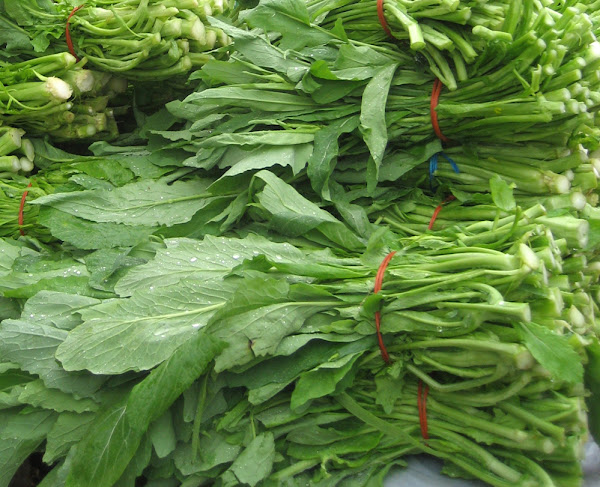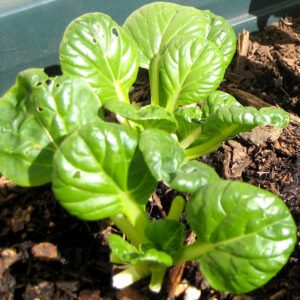You can start growing rapini (commonly marketed as broccoli raab or broccoli rabe in the United States) organically in your home garden if you want to grow something different. Growing rapini in home garden is very easy and the plants grow very fast.
The rapini is a green cruciferous vegetable which is grown mainly for it’s leaves. But, it’s leaves, buds and stems are also edible. The buds of the rapini somewhat resemble broccoli, but do not form a large head.
As a vegetable, the rapini is known for it’s slightly bitter taste and is particularly associated with Italian, Portuguese and Galician cuisines.
And within the Italian tradition, the plant is associated especially with southern Italian cuisines such as those of Naples, Campania and Apulia.
The entire stalk of the rapini plants is edible, but the plants may become more fibrous depending on the season. The plant is known by many other different names in different parts of the world.
It’s other names include friarielli, broccoletti, cime di rapa, broccoli di rape, rapi, grelos and broccoli friarelli.
However, growing rapini in your home garden has many advantages. Growing rapini organically in your home garden can provide a nutritious green vegetable during very early spring and very late fall (when few other crops are productive).
How to Grow Rapini
Growing rapini is relatively easy and the plants grow rapidly. And you can actually plan for planting the seeds directly into your home garden.
However, here we are describing everything about growing rapini organically in your home garden from planting, caring to harvesting.

Select a Location
Select a good location in your garden for growing rapini. The rapini plants grow well in both full sun and shady areas.
But selecting a good site with full sun will be good for growing rapini. The selected site also needs to be very fertile and well-drained.
Prepare the Soil
The rapini plants grow very well in fertile soil which is rich in organic content.
So, add lots of organic materials into the soil while preparing the soil. Well-rotted, aged manure or homemade compost will be good for this purpose.
Purchase Seeds
The rapini plants are grown from seeds. So, purchase good quality seeds after selecting a good site and preparing the soil.
The seeds should be easily available in your local market. You can also consider ordering the seeds online if you are not able to source the seeds within your area.
Best Time for Growing Rapini
The rapini plants prefer the same growing season, just like broccoli. The plants are mainly grown during the cool season and they can tolerate light frosts.
The plants don’t do well during the summer months, because the plants will bolt to seed in hot weather.
Planting
Planting the seeds directly into the prepared bed will be good for growing rapini plants. But planting the seeds in rows will be good.
The rows should be 10-12 inches apart. So, make several rows in the prepared bed and sow seeds to about 3-4 inches apart. You can thin the seedlings later to 4-6 inches apart.
The rapini seeds germinate faster, and it can take about 2-3 days to germinate after sowing the seeds. And after germinating, they will quickly grow into lush, leafy plants.
Caring
Taking additional care will help the rapini plants to grow better. So, additional caring is a must for growing rapini plants.
Here we are describing more about the additional caring steps for growing rapini plants in your home garden.
Fertilizing: The rapini plants are heavy feeders, and providing them with additional fertilizer will ensure good growth of the plants. You can use organic liquid fertilizers such as blood meal, compost tea etc.
Watering: The rapini plants will grow better if you can keep the soil moist constantly. So, water the plants on a regular basis.
Mulching: Mulching helps to retain moisture into the soil. Use organic materials as mulch such as hay, grass clippings, compost, straw etc.

Controlling Weeds: Weeds consume nutrients from the soil. So controlling them will ensure good growth of the plants. You can either control the weeds by hand or by using a hoe. Heavy mulching will help to prevent most of the weeds from your garden.
Pinching: Pinching after one month of sowing the seeds is important. You will need to pinch out the first bud-bearing stem as soon as you see it, which triggers the development of more than a dozen side shoots.
Pests and Diseases
Just like growing broccoli, the rapini plants are also susceptible to some common garden pests and diseases. You should always apply homemade or organic pesticides/insecticides for controlling all these pests or diseases.
Harvesting
The rapini plants grow very fast and they become ready for harvesting within 6 to 8 weeks after planting the seeds.
The buds shatter easily, so you can cut the stems well below their heads (taking a cluster of leaves with each). You can actually start harvesting, when the plants reach your desired size.
And after harvesting, you can enjoy the greens in many different ways. The rapini is rich in vitamins A, C and K and very good for your health. Good luck & happy gardening 🙂






